How will New Hampshire, our region, our nation, and our world respond to food and environmental challenges 5, 10, 25, 50 years away? The NH Agricultural Experiment Station scientists are constantly working to identify and answer questions for which answers do not yet exist.
The modern food system is complex, interconnected, and both generates and relies on massive amounts of information. Understanding the challenges within the modern food system and the opportunities to overcome those challenges through science requires that researchers break down information silos and work together across traditional disciplines.
The New Hampshire Agricultural Experiment Station has a rich history of facilitating integrated, highly relevant research that is inspired by local issues and needs, and that has long-lasting impacts for moving forward global scientific communities.
Want to know how NHAES researchers are answering questions that have not yet been answered? Explore the numerous ongoing research that can aid our state, regional, national, and international communities remain resilient and thrive. The NHAES develops science for the public good.
Renewing An Agriculture of the Middle: Value Chain Design, Policy Approaches, Environmental and Social Impacts

For the past several decades in New England, there has been a decline in midsized farms that can support a household income. The bifurcation of agriculture into very small farms that rely on non-farm revenue and large farms that supply global markets has contributed to economic decline in rural communities, and negative environmental impacts. This project will utilize a Sustainable Livelihoods Approach to conduct a comprehensive examination of the livelihood strategies New England farmers are using to support the viability of their farms. This approach will result in a better understanding of how farm-level characteristics interact with county and state-level market and policy contexts to shape farm viability in New England.
From Native Plants to New Crops: De Novo Plant Domestication in New England
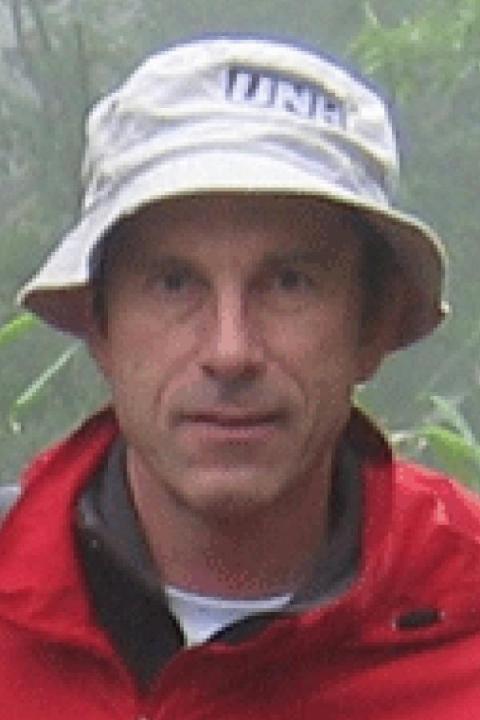
The proposed project has two closely intertwined goals: 1) the development of new, environmentally resilient crop options for regional growers in New England (NE); and 2) the development of previously unrecognized natural resources: the wild and weedy plant species indigenous to the NE region. A multi-faceted breeding approach is proposed, which will employ a combination of technologies, including selection based on DNA sequence information, and the precision gene editing tool CRISPR to fast track the genetic manipulation and de novo domestication of specific small grain and small fruit species indigenous to New England. We expect to generate new agricultural commodities produced by plants that will be extremely well-adapted to local environmental conditions and will serve the diverse interests of local growers and consumers, thereby contributing to local agricultural economies and the realization of food security visions.
Bioavailable Nitrogen: New insights, Models, and Management

The ability to transform abundant atmospheric nitrogen (N) into reactive forms that enhance crop production has been one of the most stunning and double-edged developments in human history. The vast amount of N added has substantially increased crop yields, but the majority of agricultural N inputs are not actually taken up by crops but instead lost from agricultural fields, with wide-ranging negative environmental and economic impacts. Current fertilizer-based technological solutions are not substantially improving N-use efficiency. We propose a series of experiments that will transform our understanding of the controls over soil N cycling, leading to entirely new avenues for "bottom-up," soil-based approaches to solving the agricultural N dilemma that reduce environmental pollution and increase farm profitability.
Conservation and Utilization of Plant Genetic Resources
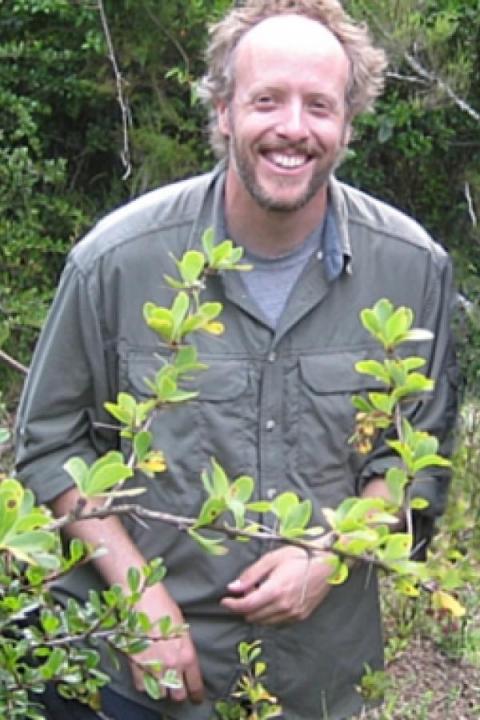
The kiwiberry a novel horticultural crop of potential economic importance to New England growers. This project systematically evaluates, for the first time under New England's growing conditions, the North American collection of cold-hardy kiwifruit germplasm. The anticipated long-term outcome of this germplasm development (plant breeding) project is the development and selection of economically viable cultivars of kiwiberry for New England. The anticipated long-term impact of this project is the establishment of a new horticultural industry in the region that provides an exciting new healthful product to consumers and a profitable option to growers.
Enhancing Rural Economic Opportunities, Community Resilience, and Entrepreneurship

Rural communities face a wide range of economic growth and development issues ranging from changing economic structure to public service provision. This project will provide an economic and policy assessment of specific topics related to areas of local foods and sustainable small scale agriculture, water and environmental issues pertaining to rural communities, rural amenities and economic growth and development, agricultural tourism and recreation, and new measures to implement the community capitals framework.
Development of Strawberry Breeding Resources and Cultivated Varieties

Dr. Lise Mahoney
Food security and climate change are major priorities globally, nationally, and regionally for New Hampshire. These priorities drive the need for local food production and for regional breeding of locally-adapted crop varieties. Although strawberry is a regionally important fruit, there are no commercial strawberry varieties specifically developed for the Northern New England region. The goals of this project are to 1) advance the breeding and release of new strawberry varieties for crop production and for ornamental value for the Northern New England region, and 2) improve on the efficacy and efficiency in breeding in strawberry. The new, locally developed and adapted, strawberry varieties are expected to increase the production of strawberries in Northern New England, contributing to satisfying the demand for local strawberries and thus increasing access to local fresh fruit and improving food security.
Managing Plant Microbe interactions in Soil to Promote Sustainable Agriculture

The success of sustainable agriculture in the United States will increasingly rely on the integration of biologically-based tools with traditional agricultural practices. The challenge is to develop economically viable alternatives to chemical pesticides without compromising yields. One strategy is to harness the power of naturally occurring beneficial microbes as biopesticides. Inconsistent field performance of biopesticides, however, has been a barrier to grower uptake. This project will elucidate how different agricultural practices (cultivars grown, fertilizers, growing substrates) influence performance and activity of the different types of biopesticides in order to develop best practices tailored to specific greenhouse production systems.
Varieties and Cultural Practices for Vegetable and Small Fruit Production in New Hampshire

Vegetable and berry growers in New Hampshire and the rest of Northern New England are challenged by a short growing season, variable weather patterns, high land values and labor costs. Despite these challenges, the opportunities for local vegetable and berry production are vast, with very strong direct marketing channels. The proposed project will provide reliable information about the adaptability of new varieties and production methods for vegetable and berry crops to the state and region. This information will help local growers maintain a high level of production of these crops while increasing profitability and reducing environmental impact.
Agri-engineering ecosystem services with perennial forage legumes

Beyond providing nutritious, high-value forage for livestock, perennial legumes have the potential to attract and support pollinator populations that are not only declining but that are critical to the success of many of our vegetable, berry, and tree fruit crops. Perennial forage legumes may also reduce the need for weed control. Despite the multifunctionality of perennial forage legumes, however, they are rarely managed in ways that exploit their full potential to enhance pollinator populations and/or suppress weeds. We will measure floral resources, pollinator visitation, beneficial insects, and weed populations associated with common and novel perennial forage legumes and identify strategies for maximizing their value for pollinator support and weed suppression. The results of this work will be useful to farmers and other agriculture professionals interested in enhancing the diversity of cropping systems and improving the overall benefits that agricultural lands provide to the citizens of northern New England and beyond.
Functional Genomic Approaches Toward Understanding the Frankia-Actinorhizal Plant Association and their Responses to Harsh Environments

Nitrogen fixation by actinorhizal plants is an important part of the nitrogen budget of the planet. The plants involved are also of economic significance with respect to land reclamation, reforestation, soil stabilization, landscaping, fuel, and as a food source for ruminant animals. The purpose of this study is the development of tools that will allow the genetic analysis of Frankia physiology and the interactions of these bacteria with their host plants. The use and development of this beneficial symbiosis has a broad impact on the agricultural system and could be exploited for other crops.
Advancing lumpfish aquaculture and their use as biological delousers in salmonid ocean farms
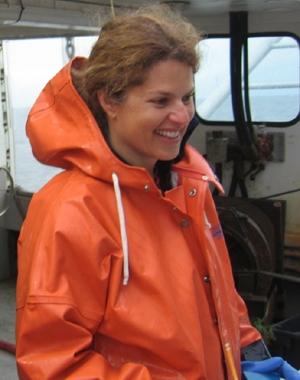
Effective sea lice control is one of the biggest issues affecting the salmonid industry. Cage-cultured, marine fish, like Atlantic salmon and steelhead trout, are subjected to naturally occurring parasitic sea lice infestations which cause harm to and reduce the quality of the fish. Using lumpfish as cleaner fish to control the sea lice populations is effective but lumpfish survival in the hatchery and on the farm can be improved. This project proposes to evaluate stocking density and lighting regimes to reduce cannibalism in the hatchery; assess the impact of water currents on the ability of lumpfish to adhere to their habitats in the salmonid farm; and advise stakeholders on best management plans to increase lumpfish production and use. Promoting better lumpfish aquaculture methods and providing recommendations for proper farm siting and integration of cleanerfish will facilitate development of lumpfish hatcheries in New England and cleanerfish use in salmonid farming operations.
Ecosystem Variation and Pathogenic Vibrio Parahaemolyticus Population Dynamics in Estuarine Shellfish

The numbers of producers and overall production associated with oyster aquaculture in northern New England continue to increase, yet the associated economic benefits remain threatened by the progressive northward emergence and persistence of Vibrio parahaemolyticus-borne illnesses in oyster consumers. All oyster producing New England states have initiated monitoring programs to track some aspects of Vibrio populations, and are instituting increasingly more stringent management practices on farmers to reduce public health risks. In collaboration with state and regional management agencies and industry, we have recently developed new tools for detection of pathogenic Vibrios and models based on environmental and biological conditions for predicting risks of Vibrio-borne illnesses.
Assessing and Managing Risk of Pathogen Contamination of Oyster Seed During Production and Importation

An unprecedented rise in gastroenteritis from shellfish contaminated with the bacterium Vibrio parahaemolyticus has occurred on the Northeastern Atlantic (NEA) coast starting in the summer 2012 which is attributed to an invasive strain, sequence type (ST) 36 that is endemic to the Pacific Northwest (PNW). This hypervirulent strain has established resilient populations in several shellfish harvest areas in the Gulf of Maine and Long Island Sound and now causes recurrent infections every year from the region. We will provide essential evidence-based knowledge to help growers and managers understand the risk of V. parahaemolyticus contamination of seed that could, when imported, introduce dangerous pathogens into NH grower areas. Combined these will allow better protection of shellfish consumers, and also allow growers to provide a safe product and minimize the negative impact of harvesting closures.
Cyclic Nucleotide Phosphodiesterases as Potential Nematicides

Plant parasitic nematodes are economically destructive to agricultural output and it is estimated that they cause $80-100 billion in agricultural losses annually. Chemical compounds employed to control these pests typically act in an indiscriminate manner, and as a result are not only less than completely effective but also have adverse environmental consequences. This proposal is intended to demonstrate that suppression of specific phosphodiesterase (PDE) activities in nematodes can lead to disruption of the lifecycle of nematodes. Demonstrating that PDEs are a potential target in plant-parasitic nematodes will lead to the development of novel nematicides that are highly selective and potent while also having minimal or no adverse effects on non-target organisms.
Advancing lumpfish aquaculture and their use as biological delousers in salmonid ocean farms
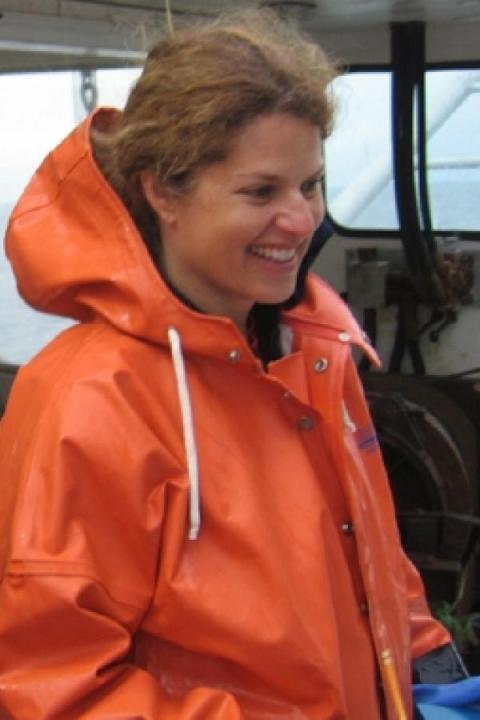
Effective sea lice control is one of the biggest issues affecting the salmonid industry. Cage-cultured, marine fish, like Atlantic salmon and steelhead trout, are subjected to naturally occurring parasitic sea lice infestations which cause harm to and reduce the quality of the fish. Using lumpfish as cleaner fish to control the sea lice populations is effective but lumpfish survival in the hatchery and on the farm can be improved. This project proposes to evaluate stocking density and lighting regimes to reduce cannibalism in the hatchery; assess the impact of water currents on the ability of lumpfish to adhere to their habitats in the salmonid farm; and advise stakeholders on best management plans to increase lumpfish production and use. Promoting better lumpfish aquaculture methods and providing recommendations for proper farm siting and integration of cleanerfish will facilitate development of lumpfish hatcheries in New England and cleanerfish use in salmonid farming operations.
Disease-Associated Bark Communities and Host Resistance as Drivers of Beech Bark Disease in Eastern North America

Beech bark disease (BBD) is common and widespread cankering disease of American beech that significantly reduces the ecological, aesthetic, and economic value of the forests in New Hampshire and beyond. BBD is referred to as a disease ""complex"" because symptoms are not specific to a single pathogen that causes disease symptoms. This project proposes to use powerful genetic technologies to quantify fungal pathogen identity and abundance within infected and uninfected beech across a gradient of duration of infection with BBD. It also represents an important first step toward realizing a broader vision of developing a deeper understanding of beech resistance to BBD pathogens across the tree's range, with the potential to promote more effective management of the beech resource and to enhance current and ongoing breeding programs.
Managing Plant Microbe interactions in Soil to Promote Sustainable Agriculture

The success of sustainable agriculture in the United States will increasingly rely on the integration of biologically-based tools with traditional agricultural practices. The challenge is to develop economically viable alternatives to chemical pesticides without compromising yields. One strategy is to harness the power of naturally occurring beneficial microbes as biopesticides. Inconsistent field performance of biopesticides, however, has been a barrier to grower uptake. This project will elucidate how different agricultural practices (cultivars grown, fertilizers, growing substrates) influence performance and activity of the different types of biopesticides in order to develop best practices tailored to specific greenhouse production systems.
Agri-engineering ecosystem services with perennial forage legumes

Beyond providing nutritious, high-value forage for livestock, perennial legumes have the potential to attract and support pollinator populations that are not only declining but that are critical to the success of many of our vegetable, berry, and tree fruit crops. Perennial forage legumes may also reduce the need for weed control. Despite the multifunctionality of perennial forage legumes, however, they are rarely managed in ways that exploit their full potential to enhance pollinator populations and/or suppress weeds. We will measure floral resources, pollinator visitation, beneficial insects, and weed populations associated with common and novel perennial forage legumes and identify strategies for maximizing their value for pollinator support and weed suppression. The results of this work will be useful to farmers and other agriculture professionals interested in enhancing the diversity of cropping systems and improving the overall benefits that agricultural lands provide to the citizens of northern New England and beyond.
Integrated Pest Management (IPM) for insect Pests of Fruits and Vegetables Grown in New England

This project will improve upon best practices for managing pests in New England fruit and vegetable crops, using the most environmentally- and economically-sustainable methods possible.We will have a better understanding of the characteristics of the best natural enemies to employ when attempting biological control of aphids in springtime high tunnel vegetable production. Current best practices are for warm, summer growing conditions, rather than the suboptimal temperature and humidity of springtime high tunnels. Growing crops, and protecting them from insect pests, in high tunnels during this time of year expands production and improves the farm business.We will identify useful, bee-safe products for chemical control of a key insect pest of zucchini, squash vine borer. Our approach of using crop sanitizers to reduce fruit susceptibility may eliminate several sprays in the season, and may also contribute to the post-harvest quality of the product.
The Functional Significance of the Soil Microbiome in New Hampshire's Agriculture: Harnessing the Power of Genomics and Ecological Theory

Microorganisms are responsible for many aspects of soil health and agricultural productivity, including decomposition and plant nutrient availability. Despite this, we lack a generalized understanding of how changes to the microbial community in soils--the microbiome--affect soil health. In this study, I will investigate the soil microbiome across an agricultural intensification gradient in New Hampshire, and develop a framework for how changes to the community affect agriculturally-relevant functions. The outcome of this work will be an understanding of how shifts to the microbial community affect shifts in the functioning of ecosystems--foundational knowledge that is required to predict the effect of land-use and management on soil health, and to continue the sustainability and profitability of New Hampshire agriculture.
Planning for drought in New Hampshire: A New Climate Challenge

New Hampshire recently experienced two severe drought events within five years, and climate predictions suggest increased frequency of drought in this region. Because we live in a historically humid climate, there have been few studies to understand the drought sensitivity of New Hampshire’s agricultural and forested lands. We will measure the drought sensitivity of various economically important grasses, crops, and tree species across different land types. By comparing our measurements to drone and satellite imagery, we will also investigate the ability to map drought sensitivity in New Hampshire. If successful, we will produce maps of the drought sensitivity of agricultural and forested lands across New Hampshire and the information we provide will help land managers better prepare for future drought events.
The Response of Water Quality and Aquatic Ecosystem Function to Changing Land Use and Variable Climate in New England

Water quality is degraded in agriculture and suburban areas occur due to changes in nutrient inputs and water flow. We have a poor understanding of how ecological processes in streams respond to these changes in water quality. Disturbances caused by variation in flow, which also vary with different land use, further modify these processes. In this study, we will determine the relationship between stream ecological function and water quality in streams draining watersheds with agriculture, suburbs, and forests. We will also compare the rates from channelized streams to rates in ponded waters including small coastal reservoirs and beaver ponds whose abundances are changing. We will combine these results in models of surface waters to help provide insight into water quality controls throughout watersheds. Findings will help to prioritize management activities that are cost effective.
The National Atmospheric Deposition Program (NADP)

Atmospheric deposition of reactive nitrogen has led to environmental problems associated with acid rain, and reduced air and water quality. However, understanding how stream ecosystems and water quality responds to changing patterns of nitrogen deposition remains a challenge. Here I will examine new models of watershed recovery by quantifying how stream chemistry across the northeastern United States has responded to changing depositional loads. I will also investigate how climatic variability interacts with landscape characteristics including land use and agriculture to influence the direction and magnitude of changes in stream chemistry. Understanding these complex interactions has implications for water quality management.
Assessing Impacts of Extreme Drought on Northern Hardwood Forest Ecosystems: Resilience, Thresholds, and Adaptive Management Strategies
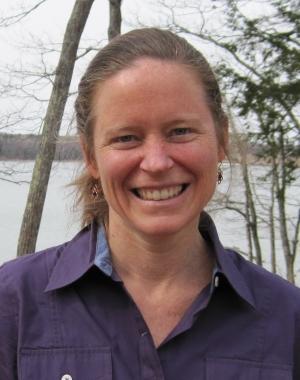
The long-term goal of this project is to enhance understanding of the ecological consequences of climate change impacts on the ecology and resilience of natural and managed northern forest ecosystems and identify sustainable and adaptive management options. Two interrelated specific objectives that contribute to achieving this goal: (1) Assess the response of northern forest ecosystems and trees species to climate change, especially extreme droughts, and the implications for providing diverse benefits to society, and (2) Evaluate the potential for diverse agroforestry systems to enhance the resilience, sustainability, and adaptive capacity of natural resource management under a drier, warmer future climate.
Evaluating Mapping Riparian Habitat and Stream Characteristics from Multi-resolution, Remotely Sensed Imagery

Riparian habitat and associated water bodies, because of their typically long, but narrow shape, have been difficult to map and monitor from remotely sensed imagery. However, recent technological improvements have provided imagery of greater detail (higher spatial resolution) including unmanned aerial systems (UAS), sometimes called drones, which have allowed geospatial scientists the potential to assess these habitats. This research project evaluates the use of high spatial resolution imagery, including UAS, for mapping and monitoring riparian habitat and its associated water bodies. Imagery recently available from some new satellites (US – Landsat 8 and Europe – Sentinel -2) will be tested to see if these improved spatial resolutions can produce high quality riparian habitat maps. In addition, the UAS imagery will be used to evaluate if mapping of invasive species within the riparian habitat is possible; to assess its potential for monitoring submerged aquatic vegetation (SAV), an indicator of stream health; and finally to monitor stream flow.
Forest Structure, Volume, and Biomass in the Northeastern United States

Changes in the forest products industry, land use change, and disturbances are evident in forests of the northeastern United States, while changing public expectations have broadened expectations of the goods, services, and benefits forests will provide. This project focuses on improved tools for assessing those benefits and their dynamics at the individual tree, stand, and landscape to regional scales. The new tools will support landowners, foresters, and other resource managers in making informed, cost-effective decisions about silviculture and forest management.
Disease-Associated Bark Communities and Host Resistance as Drivers of Beech Bark Disease in Eastern North America

Beech bark disease (BBD) is common and widespread cankering disease of American beech that significantly reduces the ecological, aesthetic, and economic value of the forests in New Hampshire and beyond. BBD is referred to as a disease "complex" because symptoms are not specific to a single pathogen that causes disease symptoms. This project proposes to use powerful genetic technologies to quantify fungal pathogen identity and abundance within infected and uninfected beech across a gradient of duration of infection with BBD. It also represents an important first step toward realizing a broader vision of developing a deeper understanding of beech resistance to BBD pathogens across the tree's range, with the potential to promote more effective management of the beech resource and to enhance current and ongoing breeding programs.
Using Genomic Tools to Monitor Wildlife Response to Young Forest Restoration

Throughout the Northeastern United States, habitat restoration efforts are ongoing on behalf of declining young forest-dependent wildlife species. This project develops and applies genomic tools to monitor population and individual-level responses to these management efforts. The findings of this research will inform managers about the effectiveness of habitat restoration efforts and contribute to the conservation of declining wildlife species of concern.
Quantifying Decadal Trends in Forest Biogeochemistry: Linking Water Quality to Landscape Dynamics in Important Water Supply Watersheds

One of the major benefits of forested watersheds in humid climates is provision of clean drinking water and reduction in the delivery of undesirable nutrients and sediments to sensitive coastal ecosystems. This proposal is intended to leverage the results of ongoing research on water quality in forested watersheds of New Hampshire and Puerto Rico to address the drivers of nitrate, organic nitrogen, and sediment delivery to water supplies and estuaries. Understanding the drivers of water quality would significantly enhance efforts to maintain drinking water supplies and protect the health of coastal eel grass beds and coral reefs.
Metabolic Engineering of Polyamines to Improve Nitrogen and Carbon Assimilation and Improved Biomass Yield in Poplar

Nitrogen (N) fertilizer is one of the costliest inputs into cultivated forestry at the nursery stage; it also is a major source of environmental nitrogen pollution (due to runoff into the aquatic bodies). Low rates of N uptake from the soil often limit carbon assimilation, thus slowing overall plant growth and productivity. A better understanding of genetic and physiological regulation of N assimilation should help us deal with both challenges, particularly in relation to forest biomass production using fast-growing cultivated tree species like poplars, and help reforestation and land management for cultivated forestry.We will produce plants which are genetically modified for increased accumulation of metabolites that have the highest N: C ratio. This research will work toward developing new varieties of elite poplar (clone NM6) that are faster growing and useful in phytoremediation.
Quantifying and Visualizing Landscape-Scale Forest Habitat Quality for Wildlife

Forest management should consider impacts on wildlife habitat because many species contribute to forest health and wildlife hold tremendous social and economic value. However, managers, landowners, planning committees, state and federal agencies, and policymakers rarely have the knowledge of wildlife response to habitat that is required to achieve these desired objectives. This project addresses this problem by quantifying how a suite of wildlife species respond to forest habitat across spatial scales ranging from local to landscape.
Planning for drought in New Hampshire: A New Climate Challenge

New Hampshire recently experienced two severe drought events within five years, and climate predictions suggest increased frequency of drought in this region. Because we live in a historically humid climate, there have been few studies to understand the drought sensitivity of New Hampshire’s agricultural and forested lands. We will measure the drought sensitivity of various economically important grasses, crops, and tree species across different land types. By comparing our measurements to drone and satellite imagery, we will also investigate the ability to map drought sensitivity in New Hampshire. If successful, we will produce maps of the drought sensitivity of agricultural and forested lands across New Hampshire and the information we provide will help land managers better prepare for future drought events.
Response of small mammals to resource pulses and forest harvesting

Small mammals are an integral part of forest ecosystems. They represent nearly half of the mammals in the region, and can provide many important ecosystem functions including the dispersal of seeds and symbiotic fungi that help trees grow. Our research will inform on the factors that cause fluctuations in the population sizes of small mammals and the functional role small mammals play in maintaining healthy forests. By evaluating the stress physiology of rodents before, during, and after masting events, we will gain a mechanistic understanding of population dynamics. Furthermore, by examining the effects of timber harvest and fragmentation on small mammal populations and communities, we will inform on sustainable forest management practices and identify the role that this ecologically diverse and important group of mammals plays in maintaining a healthy and resilient Northern Forest.
Management Systems to Improve the Economic and Environmental Sustainability of Dairy Enterprises

Agriculture is under increasing scrutiny regarding its role in global greenhouse gas emissions. Forage-based dairy systems have been particularly targeted due to greater methane emissions than confinement dairies. We are propose to link ruminant nutrition and grazing energetics to fill knowledge gaps concerning animal and dietary factors underlining the methane mitigation potential of canola as a grazing forage for lactating dairy cows through the following objectives: (1) Measure milk production, methane emissions, and nutrient utilization changes, and (2) Quantify changes in heat production, energy use efficiency, and animal activity.
Management Systems to Improve the Economic and Environmental Sustainability of Dairy Enterprises

Five studies are designed to investigate ways to improve the health and growth of calves and heifers and decrease the costs of raising the next generation of dairy cows that are an integral part of sustainable dairy farming. Improving calf health requires antibody uptake by calves from colostrum immediately after birth. Colostrum provides the antibodies to the newborn. However, recently it has been observed that Jersey cows produce low colostrum yields in the Fall and Winter. This work will consider a number of management techniques to increase colustrum yields and efficiencies.
Quantifying the Mechanistic Drivers of Weed Community Assembly Across Diverse Forage Production Systems

Herbicides and tillage are the primary tools used in weed control; however, their use can also lead to herbicide resistance, pollution of soil and water, and non-target impacts on beneficial organisms in or near agricultural fields. The crop itself, along with the organisms that naturally occur in agricultural fields, provide some level of biological weed control; however, the way we manage our agricultural systems may strongly influence their ability to suppress weeds. This project will measure the type and abundance of weeds and determine how much biological weed control is provided in different types of forage and feed grain cropping systems. By understanding how weeds are suppressed biologically by the crops and other organisms that naturally occur in these systems, we can develop cropping systems that are more effective at suppressing weeds. Improving the ability of the cropping system itself to suppress weeds should reduce the need for other more economically and environmentally costly weed control practices.
Determining the relationship between phytoestrogens and fertility in cattle: The effects of phytoestrogens on the vascular network and the function of the bovine corpus luteum during the estrous cycle

Infertility in domestic ruminants costs dairy producers between $1 and $2 billion annually. The embryonic and fetal loss is, in part, due to the impaired ability of the ovarian gland called the corpus luteum to produce adequate amounts of progesterone, the hormone of pregnancy. Essential to the optimal function of the corpus luteum is an intricate blood supply, which is established when the young corpus luteum develops. This research studies the interplay between locally-produced factors and diet-derived phytoestrogens on ovarian cells to regulate the establishment of a new blood vessel network and to maintain it during the reproductive cycle.
Improving Finfish Production in Recirculating Systems

The US is a major consumer of aquaculture products, yet we grow only a small fraction of what we consume. Due to this disparity, the US trade deficit associated with seafood has exceeded $14 billion annually. Identifying appropriate finfish species is critical for the US aquaculture industry to continue to expand. One impediment that has hindered the expansion of finfish aquaculture has been the limited number of appropriate species choices. Candidate aquaculture species must command a premium price, have high consumer demand and adapt to localized environments for profitable production. Two species that meet all these criteria are the striped bass (foodfish) and rainbow smelt (baitfish). This research builds on our previous research with these species and addresses important research needs for answering questions related to optimizing their growth, reproduction and feeding.
Uncertain Times for Oyster Aquaculture in Great Bay Estuary: Quantifying Connections Between Farmed and Wild Oysters and Refining Our Understanding of Disease Effects

New Hampshire's Great Bay Estuary (GBE) once had extensive oyster reefs. Over the last two decades, local conservation efforts have been directed toward reef restoration and concurrently, oyster farming has grown within GBE. A promising ecosystem service of the Eastern oyster that has not yet been investigated is the potential for farmed oysters situated in optimum growing areas to produce larvae that can supplement declining recruitment to wild oyster populations. The resulting science will enhance the processes and economics associated with commercially cultivating oysters, allow us to further quantify ecosystem services provided by farmed oysters, and enhance the success of both oyster aquaculture and reef restoration in NH.
Evaluating Mapping Riparian Habitat and Stream Characteristics from Multi-resolution, Remotely Sensed Imagery

Riparian habitat and associated water bodies, because of their typically long, but narrow shape, have been difficult to map and monitor from remotely sensed imagery. However, recent technological improvements have provided imagery of greater detail (higher spatial resolution) including unmanned aerial systems (UAS), sometimes called drones, which have allowed geospatial scientists the potential to assess these habitats. This research project evaluates the use of high spatial resolution imagery, including UAS, for mapping and monitoring riparian habitat and its associated water bodies. Imagery recently available from some new satellites (US – Landsat 8 and Europe – Sentinel -2) will be tested to see if these improved spatial resolutions can produce high quality riparian habitat maps. In addition, the UAS imagery will be used to evaluate if mapping of invasive species within the riparian habitat is possible; to assess its potential for monitoring submerged aquatic vegetation (SAV), an indicator of stream health; and finally to monitor stream flow.
Forest Structure, Volume, and Biomass in the Northeastern United States

Changes in the forest products industry, land use change, and disturbances are evident in forests of the northeastern United States, while changing public expectations have broadened expectations of the goods, services, and benefits forests will provide. This project focuses on improved tools for assessing those benefits and their dynamics at the individual tree, stand, and landscape to regional scales. The new tools will support landowners, foresters, and other resource managers in making informed, cost-effective decisions about silviculture and forest management.
Ecosystem Variation and Pathogenic Vibrio Parahaemolyticus Population Dynamics in Estuarine Shellfish

The numbers of producers and overall production associated with oyster aquaculture in northern New England continue to increase, yet the associated economic benefits remain threatened by the progressive northward emergence and persistence of Vibrio parahaemolyticus-borne illnesses in oyster consumers. All oyster producing New England states have initiated monitoring programs to track some aspects of Vibrio populations, and are instituting increasingly more stringent management practices on farmers to reduce public health risks. In collaboration with state and regional management agencies and industry, we have recently developed new tools for detection of pathogenic Vibrios and models based on environmental and biological conditions for predicting risks of Vibrio-borne illnesses.
Using Genomic Tools to Monitor Wildlife Response to Young Forest Restoration

Throughout the Northeastern United States, habitat restoration efforts are ongoing on behalf of declining young forest-dependent wildlife species. This project develops and applies genomic tools to monitor population and individual-level responses to these management efforts. The findings of this research will inform managers about the effectiveness of habitat restoration efforts and contribute to the conservation of declining wildlife species of concern.
Quantifying Decadal Trends in Forest Biogeochemistry: Linking Water Quality to Landscape Dynamics in Important Water Supply Watersheds

One of the major benefits of forested watersheds in humid climates is provision of clean drinking water and reduction in the delivery of undesirable nutrients and sediments to sensitive coastal ecosystems. This proposal is intended to leverage the results of ongoing research on water quality in forested watersheds of New Hampshire and Puerto Rico to address the drivers of nitrate, organic nitrogen, and sediment delivery to water supplies and estuaries. Understanding the drivers of water quality would significantly enhance efforts to maintain drinking water supplies and protect the health of coastal eel grass beds and coral reefs.
Quantifying and Visualizing Landscape-Scale Forest Habitat Quality for Wildlife

Forest management should consider impacts on wildlife habitat because many species contribute to forest health and wildlife hold tremendous social and economic value. However, managers, landowners, planning committees, state and federal agencies, and policymakers rarely have the knowledge of wildlife response to habitat that is required to achieve these desired objectives. This project addresses this problem by quantifying how a suite of wildlife species respond to forest habitat across spatial scales ranging from local to landscape.
Response of small mammals to resource pulses and forest harvesting

Small mammals are an integral part of forest ecosystems. They represent nearly half of the mammals in the region, and can provide many important ecosystem functions including the dispersal of seeds and symbiotic fungi that help trees grow. Our research will inform on the factors that cause fluctuations in the population sizes of small mammals and the functional role small mammals play in maintaining healthy forests. By evaluating the stress physiology of rodents before, during, and after masting events, we will gain a mechanistic understanding of population dynamics. Furthermore, by examining the effects of timber harvest and fragmentation on small mammal populations and communities, we will inform on sustainable forest management practices and identify the role that this ecologically diverse and important group of mammals plays in maintaining a healthy and resilient Northern Forest.
Assessing and Managing Risk of Pathogen Contamination of Oyster Seed During Production and Importation

An unprecedented rise in gastroenteritis from shellfish contaminated with the bacterium Vibrio parahaemolyticus has occurred on the Northeastern Atlantic (NEA) coast starting in the summer 2012 which is attributed to an invasive strain, sequence type (ST) 36 that is endemic to the Pacific Northwest (PNW). This hypervirulent strain has established resilient populations in several shellfish harvest areas in the Gulf of Maine and Long Island Sound and now causes recurrent infections every year from the region. We will provide essential evidence-based knowledge to help growers and managers understand the risk of V. parahaemolyticus contamination of seed that could, when imported, introduce dangerous pathogens into NH grower areas. Combined these will allow better protection of shellfish consumers, and also allow growers to provide a safe product and minimize the negative impact of harvesting closures.
Management Systems to Improve the Economic and Environmental Sustainability of Dairy Enterprises

Agriculture is under increasing scrutiny regarding its role in global greenhouse gas emissions. Forage-based dairy systems have been particularly targeted due to greater methane emissions than confinement dairies. We are propose to link ruminant nutrition and grazing energetics to fill knowledge gaps concerning animal and dietary factors underlining the methane mitigation potential of canola as a grazing forage for lactating dairy cows through the following objectives: (1) Measure milk production, methane emissions, and nutrient utilization changes, and (2) Quantify changes in heat production, energy use efficiency, and animal activity.
Management Systems to Improve the Economic and Environmental Sustainability of Dairy Enterprises

Five studies are designed to investigate ways to improve the health and growth of calves and heifers and decrease the costs of raising the next generation of dairy cows that are an integral part of sustainable dairy farming. Improving calf health requires antibody uptake by calves from colostrum immediately after birth. Colostrum provides the antibodies to the newborn. However, recently it has been observed that Jersey cows produce low colostrum yields in the Fall and Winter. This work will consider a number of management techniques to increase colustrum yields and efficiencies.
Varieties and Cultural Practices for Vegetable and Small Fruit Production in New Hampshire

Vegetable and berry growers in New Hampshire and the rest of Northern New England are challenged by a short growing season, variable weather patterns, high land values and labor costs. Despite these challenges, the opportunities for local vegetable and berry production are vast, with very strong direct marketing channels. The proposed project will provide reliable information about the adaptability of new varieties and production methods for vegetable and berry crops to the state and region. This information will help local growers maintain a high level of production of these crops while increasing profitability and reducing environmental impact.
The Impact of SNAP-Ed on Dietary Quality, Food Safety Handling Behaviors, and insulin Resistance Among Bhutanese Adults Residing in New Hampshire

The Bhutanese community is the largest refugee group residing in New Hampshire and building evidence suggests they are at an elevated risk of poor dietary quality, foodborne illness, and insulin resistance (a risk factor for type 2 diabetes). The overall aim of this project is to conduct a pilot study using a randomized controlled study design to evaluate the impact of a 6-week in-home delivered NH SNAP-Ed program on the dietary quality and food safety handling behaviors of adult Bhutanese refugees resettled in NH. It is anticipated that this work will provide evidence of the effectiveness of this intervention on the health status of Bhutanese refugee adults and will provide a model for future prevention efforts conducted among this and other refugee communities in NH and elsewhere.
Fiber-rich foods, weight status, and the gut microbiota: A comparative study in NH Hispanic adults at risk for food insecurity

The obesity epidemic has placed a significant health and socioeconomic burden on the United States population but has disproportionately impacted ethnic minority groups, especially in low socioeconomic sectors. Therefore, there is a need to identify opportunities for food producers and federal food assistance programs to increase the nutritional value of the food supply to help address these health problems. Specifically, an increased availability and intake of fiber-rich foods would be beneficial, given that fiber is an important component of a healthy diet. This project will quantify the relationship between food access, fiber intake, gut microbiota, and health outcomes in NH Hispanic adults at risk for food insecurity. Knowledge of such barriers will inform food producers of the food consumption patterns of this expanding demographic in NH, thereby revealing opportunities to augment and enhance the food supply chain. Specifically, this project may promote local high-fiber crop expansion, benefitting NH farming communities. Finally, this research will reveal targets for increased food security and improved nutritional status in vulnerable populations through federal and local food assistance policies.
Renewing An Agriculture of the Middle: Value Chain Design, Policy Approaches, Environmental and Social Impacts

For the past several decades in New England, there has been a decline in midsized farms that can support a household income. The bifurcation of agriculture into very small farms that rely on non-farm revenue and large farms that supply global markets has contributed to economic decline in rural communities, and negative environmental impacts. This project will utilize a Sustainable Livelihoods Approach to conduct a comprehensive examination of the livelihood strategies New England farmers are using to support the viability of their farms. This approach will result in a better understanding of how farm-level characteristics interact with county and state-level market and policy contexts to shape farm viability in New England.
Enhancing Rural Economic Opportunities, Community Resilience, and Entrepreneurship

Rural communities face a wide range of economic growth and development issues ranging from changing economic structure to public service provision. This project will provide an economic and policy assessment of specific topics related to areas of local foods and sustainable small scale agriculture, water and environmental issues pertaining to rural communities, rural amenities and economic growth and development, agricultural tourism and recreation, and new measures to implement the community capitals framework.
Understanding and Promoting Health and Nutrition in Communities of Emerging Adults

Emerging adulthood, or the transition through late adolescence and young adult years, is a distinct stage of life associated with declines in healthy lifestyle behaviors and weight gain. Targeted research is needed to understand the interactions between individual, environmental, and disruptive factors associated with these adverse outcomes. This proposal aims to profile the health status and weight-related health disparities among young adults in New Hampshire via comprehensive health assessments, as well as adapt behavioral and environmental audits for campuses and communities with low-income. Dissemination of findings will support communities of young adults build resiliency and inform future interventions that support sustained, positive behavior change among this vulnerable population.
The Impact of SNAP-Ed on Dietary Quality, Food Safety Handling Behaviors, and insulin Resistance Among Bhutanese Adults Residing in New Hampshire

The Bhutanese community is the largest refugee group residing in New Hampshire and building evidence suggests they are at an elevated risk of poor dietary quality, foodborne illness, and insulin resistance (a risk factor for type 2 diabetes). The overall aim of this project is to conduct a pilot study using a randomized controlled study design to evaluate the impact of a 6-week in-home delivered NH SNAP-Ed program on the dietary quality and food safety handling behaviors of adult Bhutanese refugees resettled in NH. It is anticipated that this work will provide evidence of the effectiveness of this intervention on the health status of Bhutanese refugee adults and will provide a model for future prevention efforts conducted among this and other refugee communities in NH and elsewhere.
Fiber-rich foods, weight status, and the gut microbiota: A comparative study in NH Hispanic adults at risk for food insecurity

The obesity epidemic has placed a significant health and socioeconomic burden on the United States population but has disproportionately impacted ethnic minority groups, especially in low socioeconomic sectors. Therefore, there is a need to identify opportunities for food producers and federal food assistance programs to increase the nutritional value of the food supply to help address these health problems. Specifically, an increased availability and intake of fiber-rich foods would be beneficial, given that fiber is an important component of a healthy diet. This project will quantify the relationship between food access, fiber intake, gut microbiota, and health outcomes in NH Hispanic adults at risk for food insecurity. Knowledge of such barriers will inform food producers of the food consumption patterns of this expanding demographic in NH, thereby revealing opportunities to augment and enhance the food supply chain. Specifically, this project may promote local high-fiber crop expansion, benefitting NH farming communities. Finally, this research will reveal targets for increased food security and improved nutritional status in vulnerable populations through federal and local food assistance policies.
Management Systems to Improve the Economic and Environmental Sustainability of Dairy Enterprises

Five studies are designed to investigate ways to improve the health and growth of calves and heifers and decrease the costs of raising the next generation of dairy cows that are an integral part of sustainable dairy farming. Improving calf health requires antibody uptake by calves from colostrum immediately after birth. Colostrum provides the antibodies to the newborn. However, recently it has been observed that Jersey cows produce low colostrum yields in the Fall and Winter. This work will consider a number of management techniques to increase colustrum yields and efficiencies.
Understanding and Promoting Health and Nutrition in Communities of Emerging Adults

Emerging adulthood, or the transition through late adolescence and young adult years, is a distinct stage of life associated with declines in healthy lifestyle behaviors and weight gain. Targeted research is needed to understand the interactions between individual, environmental, and disruptive factors associated with these adverse outcomes. This proposal aims to profile the health status and weight-related health disparities among young adults in New Hampshire via comprehensive health assessments, as well as adapt behavioral and environmental audits for campuses and communities with low-income. Dissemination of findings will support communities of young adults build resiliency and inform future interventions that support sustained, positive behavior change among this vulnerable population.
Root and fungal contributions to soil organic matter formation and stabilization

Agricultural productivity is dependent on nutrient cycling processes which are mediated by plant roots and soil microorganisms. Human-induced environmental change (e.g., climate warming, land-use change) may alter root and microbial dynamics, thus impacting crop productivity. This research will provide more accurate and realistic parameters used in Earth system models used to predict global soil C dynamics. Model output will inform land management and policy decisions on climate change adaptation and mitigation for agricultural systems. Improved models will provide more accurate and realistic projections of future global change scenarios which land managers and policy makers can use to inform their decision-making on adaptation and mitigation.
Conservation and Utilization of Plant Genetic Resources

The kiwiberry a novel horticultural crop of potential economic importance to New England growers. This project systematically evaluates, for the first time under New England's growing conditions, the North American collection of cold-hardy kiwifruit germplasm. The anticipated long-term outcome of this germplasm development (plant breeding) project is the development and selection of economically viable cultivars of kiwiberry for New England. The anticipated long-term impact of this project is the establishment of a new horticultural industry in the region that provides an exciting new healthful product to consumers and a profitable option to growers.
Using Genomic Tools to Monitor Wildlife Response to Young Forest Restoration

Throughout the Northeastern United States, habitat restoration efforts are ongoing on behalf of declining young forest-dependent wildlife species. This project develops and applies genomic tools to monitor population and individual-level responses to these management efforts. The findings of this research will inform managers about the effectiveness of habitat restoration efforts and contribute to the conservation of declining wildlife species of concern.
Metabolic Engineering of Polyamines to Improve Nitrogen and Carbon Assimilation and Improved Biomass Yield in Poplar

Nitrogen (N) fertilizer is one of the costliest inputs into cultivated forestry at the nursery stage; it also is a major source of environmental nitrogen pollution (due to runoff into the aquatic bodies). Low rates of N uptake from the soil often limit carbon assimilation, thus slowing overall plant growth and productivity. A better understanding of genetic and physiological regulation of N assimilation should help us deal with both challenges, particularly in relation to forest biomass production using fast-growing cultivated tree species like poplars, and help reforestation and land management for cultivated forestry.We will produce plants which are genetically modified for increased accumulation of metabolites that have the highest N: C ratio. This research will work toward developing new varieties of elite poplar (clone NM6) that are faster growing and useful in phytoremediation.
Biomarkers for Metagenomics Analysis of Plant Parasitic Nematode Communities

Nematode parasites of plants are a major cause of crop loss and a global threat to agriculture. Evaluating the existence of plant parasites in agricultural soils is critical to the proper application of mitigation strategies like crop rotation, and pesticide application. We propose to apply the dramatic improvements in genome sequencing technology to transform our ability to detect and quantify the presents of the important plant parasites. Those improved methods have the potential to significantly reduce the costs of analysis and to improve the outcomes of mitigation strategies reducing pesticide use and costs of agricultural practices.
Functional Genomic Approaches Toward Understanding the Frankia-Actinorhizal Plant Association and their Responses to Harsh Environments

Nitrogen fixation by actinorhizal plants is an important part of the nitrogen budget of the planet. The plants involved are also of economic significance with respect to land reclamation, reforestation, soil stabilization, landscaping, fuel, and as a food source for ruminant animals. The purpose of this study is the development of tools that will allow the genetic analysis of Frankia physiology and the interactions of these bacteria with their host plants. The use and development of this beneficial symbiosis has a broad impact on the agricultural system and could be exploited for other crops.
Determining the relationship between phytoestrogens and fertility in cattle: The effects of phytoestrogens on the vascular network and the function of the bovine corpus luteum during the estrous cycle

Infertility in domestic ruminants costs dairy producers between $1 and $2 billion annually. The embryonic and fetal loss is, in part, due to the impaired ability of the ovarian gland called the corpus luteum to produce adequate amounts of progesterone, the hormone of pregnancy. Essential to the optimal function of the corpus luteum is an intricate blood supply, which is established when the young corpus luteum develops. This research studies the interplay between locally-produced factors and diet-derived phytoestrogens on ovarian cells to regulate the establishment of a new blood vessel network and to maintain it during the reproductive cycle.
The Functional Significance of the Soil Microbiome in New Hampshire's Agriculture: Harnessing the Power of Genomics and Ecological Theory

Microorganisms are responsible for many aspects of soil health and agricultural productivity, including decomposition and plant nutrient availability. Despite this, we lack a generalized understanding of how changes to the microbial community in soils--the microbiome--affect soil health. In this study, I will investigate the soil microbiome across an agricultural intensification gradient in New Hampshire, and develop a framework for how changes to the community affect agriculturally-relevant functions. The outcome of this work will be an understanding of how shifts to the microbial community affect shifts in the functioning of ecosystems--foundational knowledge that is required to predict the effect of land-use and management on soil health, and to continue the sustainability and profitability of New Hampshire agriculture.
Root and fungal contributions to soil organic matter formation and stabilization

Agricultural productivity is dependent on nutrient cycling processes which are mediated by plant roots and soil microorganisms. Human-induced environmental change (e.g., climate warming, land-use change) may alter root and microbial dynamics, thus impacting crop productivity. This research will provide more accurate and realistic parameters used in Earth system models used to predict global soil C dynamics. Model output will inform land management and policy decisions on climate change adaptation and mitigation for agricultural systems. Improved models will provide more accurate and realistic projections of future global change scenarios which land managers and policy makers can use to inform their decision-making on adaptation and mitigation.
Bioavailable Nitrogen: New insights, Models, and Management

The ability to transform abundant atmospheric nitrogen (N) into reactive forms that enhance crop production has been one of the most stunning and double-edged developments in human history. The vast amount of N added has substantially increased crop yields, but the majority of agricultural N inputs are not actually taken up by crops but instead lost from agricultural fields, with wide-ranging negative environmental and economic impacts. Current fertilizer-based technological solutions are not substantially improving N-use efficiency. We propose a series of experiments that will transform our understanding of the controls over soil N cycling, leading to entirely new avenues for 'bottom-up', soil-based approaches to solving the agricultural N dilemma that reduce environmental pollution and increase farm profitability.
Biomarkers for Metagenomics Analysis of Plant Parasitic Nematode Communities

Nematode parasites of plants are a major cause of crop loss and a global threat to agriculture. Evaluating the existence of plant parasites in agricultural soils is critical to the proper application of mitigation strategies like crop rotation, and pesticide application. We propose to apply the dramatic improvements in genome sequencing technology to transform our ability to detect and quantify the presents of the important plant parasites. Those improved methods have the potential to significantly reduce the costs of analysis and to improve the outcomes of mitigation strategies reducing pesticide use and costs of agricultural practices.
From Native Plants to New Crops: De Novo Plant Domestication in New England

The proposed project has two closely intertwined goals: 1) the development of new, environmentally resilient crop options for regional growers in New England (NE); and 2) the development of previously unrecognized natural resources: the wild and weedy plant species indigenous to the NE region. A multi-faceted breeding approach is proposed, which will employ a combination of technologies, including selection based on DNA sequence information, and the precision gene editing tool CRISPR to fast track the genetic manipulation and de novo domestication of specific small grain and small fruit species indigenous to New England. We expect to generate new agricultural commodities produced by plants that will be extremely well-adapted to local environmental conditions and will serve the diverse interests of local growers and consumers, thereby contributing to local agricultural economies and the realization of food security visions.
Conservation and Utilization of Plant Genetic Resources

The kiwiberry a novel horticultural crop of potential economic importance to New England growers. This project systematically evaluates, for the first time under New England's growing conditions, the North American collection of cold-hardy kiwifruit germplasm. The anticipated long-term outcome of this germplasm development (plant breeding) project is the development and selection of economically viable cultivars of kiwiberry for New England. The anticipated long-term impact of this project is the establishment of a new horticultural industry in the region that provides an exciting new healthful product to consumers and a profitable option to growers.
Development of Strawberry Breeding Resources and Cultivated Varieties

Dr. Lise Mahoney
Food security and climate change are major priorities globally, nationally, and regionally for New Hampshire. These priorities drive the need for local food production and for regional breeding of locally-adapted crop varieties. Although strawberry is a regionally important fruit, there are no commercial strawberry varieties specifically developed for the Northern New England region. The goals of this project are to 1) advance the breeding and release of new strawberry varieties for crop production and for ornamental value for the Northern New England region, and 2) improve on the efficacy and efficiency in breeding in strawberry. The new, locally developed and adapted, strawberry varieties are expected to increase the production of strawberries in Northern New England, contributing to satisfying the demand for local strawberries and thus increasing access to local fresh fruit and improving food security.
Varieties and Cultural Practices for Vegetable and Small Fruit Production in New Hampshire

Vegetable and berry growers in New Hampshire and the rest of Northern New England are challenged by a short growing season, variable weather patterns, high land values and labor costs. Despite these challenges, the opportunities for local vegetable and berry production are vast, with very strong direct marketing channels. The proposed project will provide reliable information about the adaptability of new varieties and production methods for vegetable and berry crops to the state and region. This information will help local growers maintain a high level of production of these crops while increasing profitability and reducing environmental impact.
Integrated Pest Management (IPM) for insect Pests of Fruits and Vegetables Grown in New England

This project will improve upon best practices for managing pests in New England fruit and vegetable crops, using the most environmentally- and economically-sustainable methods possible.We will have a better understanding of the characteristics of the best natural enemies to employ when attempting biological control of aphids in springtime high tunnel vegetable production. Current best practices are for warm, summer growing conditions, rather than the suboptimal temperature and humidity of springtime high tunnels. Growing crops, and protecting them from insect pests, in high tunnels during this time of year expands production and improves the farm business.We will identify useful, bee-safe products for chemical control of a key insect pest of zucchini, squash vine borer. Our approach of using crop sanitizers to reduce fruit susceptibility may eliminate several sprays in the season, and may also contribute to the post-harvest quality of the product.
Improving Finfish Production in Recirculating Systems

The United States is a major consumer of aquaculture products, yet we grow only a small fraction of what we consume. Due to this disparity, the US trade deficit associated with seafood has exceeded $14 billion annually. Identifying appropriate finfish species is critical for the US aquaculture industry to continue to expand. One impediment that has hindered the expansion of finfish aquaculture has been the limited number of appropriate species choices. Candidate aquaculture species must command a premium price, have high consumer demand and adapt to localized environments for profitable production. Two species that meet all these criteria are the striped bass (foodfish) and rainbow smelt (baitfish). This research builds on our previous research with these species and addresses important research needs for answering questions related to optimizing their growth, reproduction and feeding.
Uncertain Times for Oyster Aquaculture in Great Bay Estuary: Quantifying Connections Between Farmed and Wild Oysters and Refining Our Understanding of Disease Effects

New Hampshire's Great Bay Estuary (GBE) once had extensive oyster reefs. Over the last two decades, local conservation efforts have been directed toward reef restoration and concurrently, oyster farming has grown within GBE. A promising ecosystem service of the Eastern oyster that has not yet been investigated is the potential for farmed oysters situated in optimum growing areas to produce larvae that can supplement declining recruitment to wild oyster populations. The resulting science will enhance the processes and economics associated with commercially cultivating oysters, allow us to further quantify ecosystem services provided by farmed oysters, and enhance the success of both oyster aquaculture and reef restoration in NH.
Advancing lumpfish aquaculture and their use as biological delousers in salmonid ocean farms

Effective sea lice control is one of the biggest issues affecting the salmonid industry. Cage-cultured, marine fish, like Atlantic salmon and steelhead trout, are subjected to naturally occurring parasitic sea lice infestations which cause harm to and reduce the quality of the fish. Using lumpfish as cleaner fish to control the sea lice populations is effective but lumpfish survival in the hatchery and on the farm can be improved. This project proposes to evaluate stocking density and lighting regimes to reduce cannibalism in the hatchery; assess the impact of water currents on the ability of lumpfish to adhere to their habitats in the salmonid farm; and advise stakeholders on best management plans to increase lumpfish production and use. Promoting better lumpfish aquaculture methods and providing recommendations for proper farm siting and integration of cleanerfish will facilitate development of lumpfish hatcheries in New England and cleanerfish use in salmonid farming operations.
Assessing Impacts of Extreme Drought on Northern Hardwood Forest Ecosystems: Resilience, Thresholds, and Adaptive Management Strategies

The long-term goal of this project is to enhance understanding of the ecological consequences of climate change impacts on the ecology and resilience of natural and managed northern forest ecosystems and identify sustainable and adaptive management options. Two interrelated specific objectives that contribute to achieving this goal: (1) Assess the response of northern forest ecosystems and trees species to climate change, especially extreme droughts, and the implications for providing diverse benefits to society, and (2) Evaluate the potential for diverse agroforestry systems to enhance the resilience, sustainability, and adaptive capacity of natural resource management under a drier, warmer future climate.
The Response of Water Quality and Aquatic Ecosystem Function to Changing Land Use and Variable Climate in New England

Water quality is degraded in agriculture and suburban areas occur due to changes in nutrient inputs and water flow. We have a poor understanding of how ecological processes in streams respond to these changes in water quality. Disturbances caused by variation in flow, which also vary with different land use, further modify these processes. In this study, we will determine the relationship between stream ecological function and water quality in streams draining watersheds with agriculture, suburbs, and forests. We will also compare the rates from channelized streams to rates in ponded waters including small coastal reservoirs and beaver ponds whose abundances are changing. We will combine these results in models of surface waters to help provide insight into water quality controls throughout watersheds. Findings will help to prioritize management activities that are cost effective.
The National Atmospheric Deposition Program (NADP)

Atmospheric deposition of reactive nitrogen has led to environmental problems associated with acid rain, and reduced air and water quality. However, understanding how stream ecosystems and water quality responds to changing patterns of nitrogen deposition remains a challenge. Here I will examine new models of watershed recovery by quantifying how stream chemistry across the northeastern United States has responded to changing depositional loads. I will also investigate how climatic variability interacts with landscape characteristics including land use and agriculture to influence the direction and magnitude of changes in stream chemistry. Understanding these complex interactions has implications for water quality management.
Using oyster biosensors to improve aquaculture yield and food safety
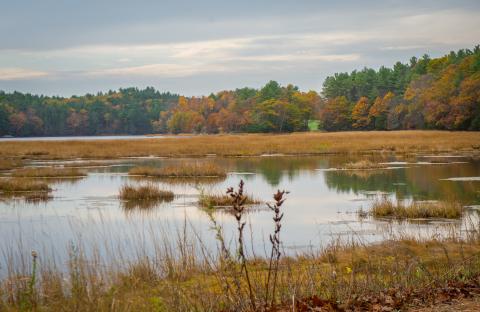
Dr. Easton White, Dr. Brittany Jellison, Dr. May-Win Thein, Dr. Bonnie Brown, Andrew Villeneuve
Oyster aquaculture is a growing industry in New Hampshire with considerable economic benefits to the state. Successful oyster cultivation relies on proper siting and monitoring of variable water conditions. Farmers and managers need accurate environmental data and real-time information on animal health to determine aquaculture siting, farming techniques and regulations. This project will focus on the construction, testing and deployment of a biosensor network at two oyster farms within Great Bay, New Hampshire, allowing farmers to determine what environmental factors are most predictive of changes in oyster condition. Read about this research on UNH Today!
Biodiversity matters: Exploring links between species richness and psychological wellbeing

Dr. Lauren Ferguson, Dr. Remington Moll, Dr. Karina Sanchez, Dr. Laura Kloepper
Previous research has suggested that a forest's wildlife biodiversity and forest management approaches might increase the health benefits of recreational hiking, where higher biodiversity is associated with larger psychological health benefits. In addition, human perception influences recreational experience in that people tend to underestimate biodiversity, which in turn might reduce the quality of a recreational experience and its associated psychological health benefits. This proposed study aims to examine the relationships described above through a field experiment conducted in College Woods on the UNH campus, which is an actively managed forest and a popular hiking destination, measuring the actual vertebrate biodiversity of multiple taxa, including mammals, birds, frogs and plants, while also measuring perceptions of biodiversity and psychological wellbeing. Read about this research on UNH Today!
An On-the-go Sensor to Enable Low-cost, In-situ and Rapid Measurements of Deep Soil Carbon/Nitrogen

Dr. Md Shaad Mahmud, Dr. Wil Wollheim
Both soil organic matter (SOM) and soil nitrogen influences a variety of physical, chemical and biological processes that occur in the soil environment. For example, soil quality is linked to vital ecosystem services like nutrient cycling and storage, pollutant absorption and retention, and carbon dioxide sequestration. The goal of this project is to develop and evaluate an on-the-go soil sensor to measure soil C and N concentration continuously and accurately using in-situ sensors, which can be used to directly calculate the C/N ratio as the measured C and N always come from the same soil sample at any moment. Read about this research on UNH Today!
Wet deposition of per- and polyfluoroalkyl substances (PFAS) in a suburbanizing watershed

Dr. Adam Wymore, Dr. Paula Mouser
Per- and polyfluoroalkyl substances (PFAS) represent a group of synthetic fluorinated compounds found in many industrial and consumer applications and products. Recently termed “forever chemicals”, some PFAS are toxic to humans and animals, presenting health effects that may include forms of cancer, reduced fertility, liver and thyroid disease, as well as increased severity of COVID-19 infection and reduced efficacy of vaccines. Effects can be particularly harmful in vertebrates due to bioaccumulation including in grass fed and foraging livestock. The primary goal of this research is to quantify the magnitude and time and space variability of PFAS wet deposition into a suburbanizing watershed with mixed land-use including agriculture (e.g., dairy cattle) and housing developments. This project offers a first of its kind evaluation of PFAS depositional inputs into suburban New Hampshire with implications for ongoing rulemaking for PFAS in soils and surface waters. Read about this research on UNH Today!





